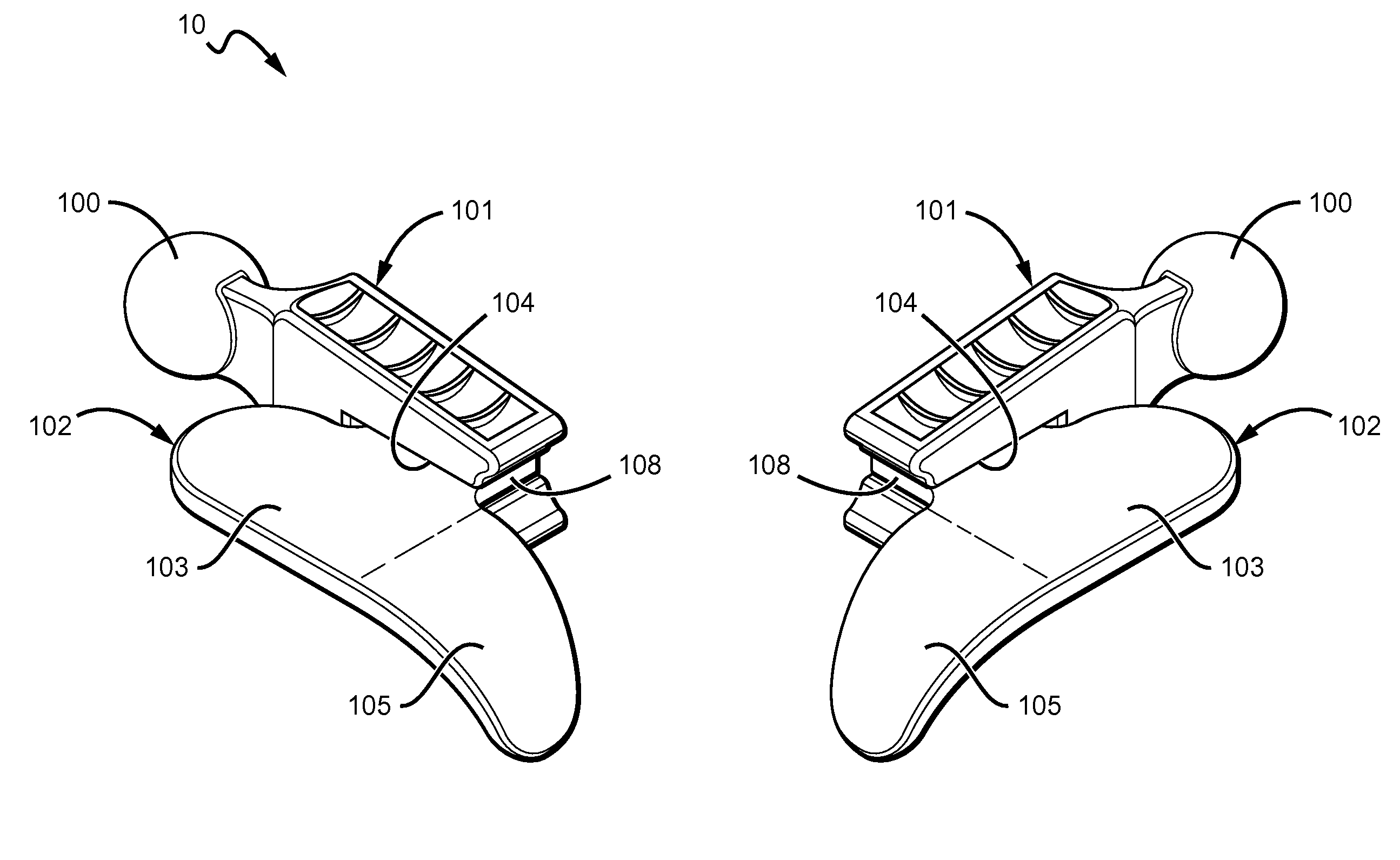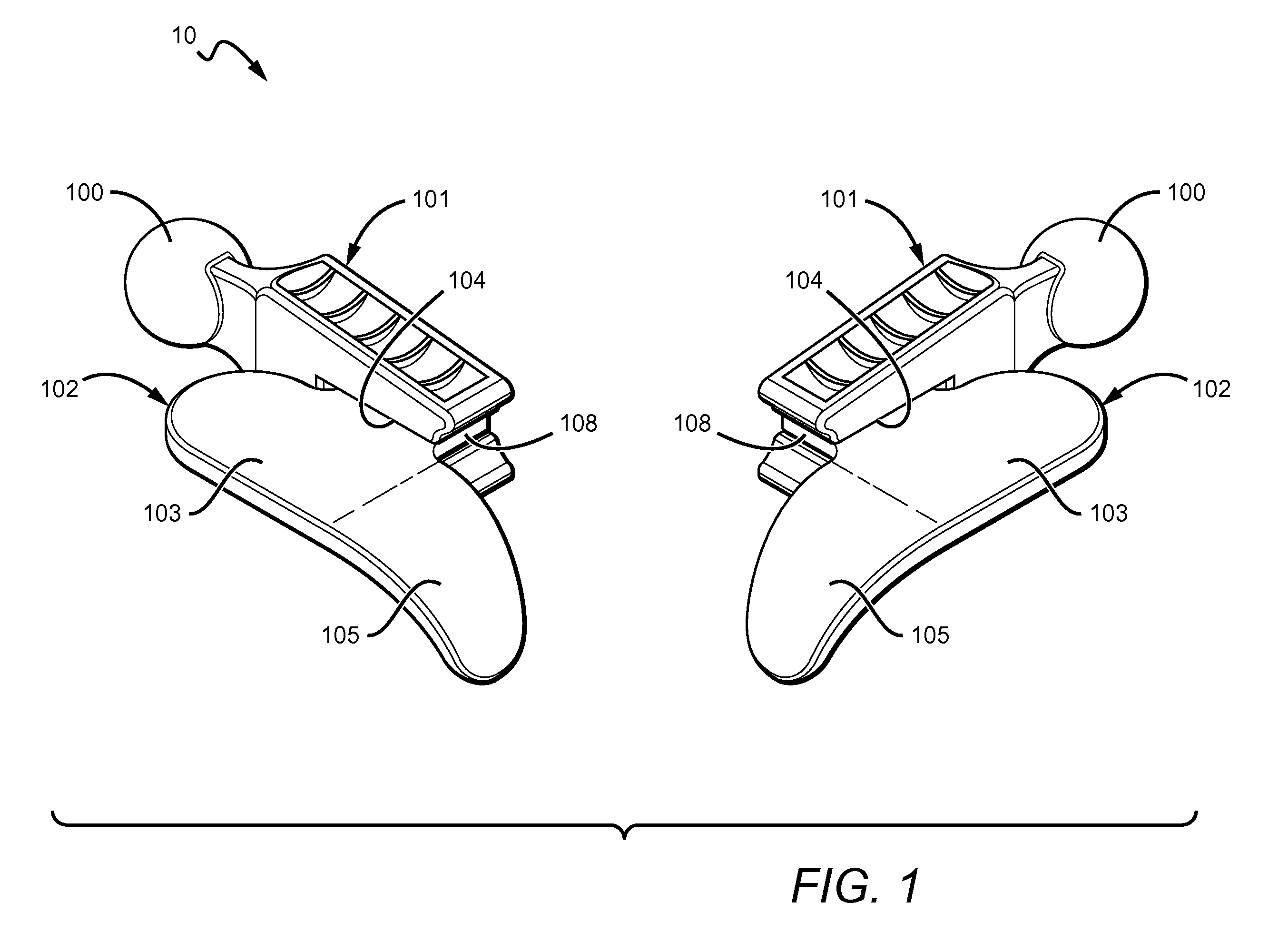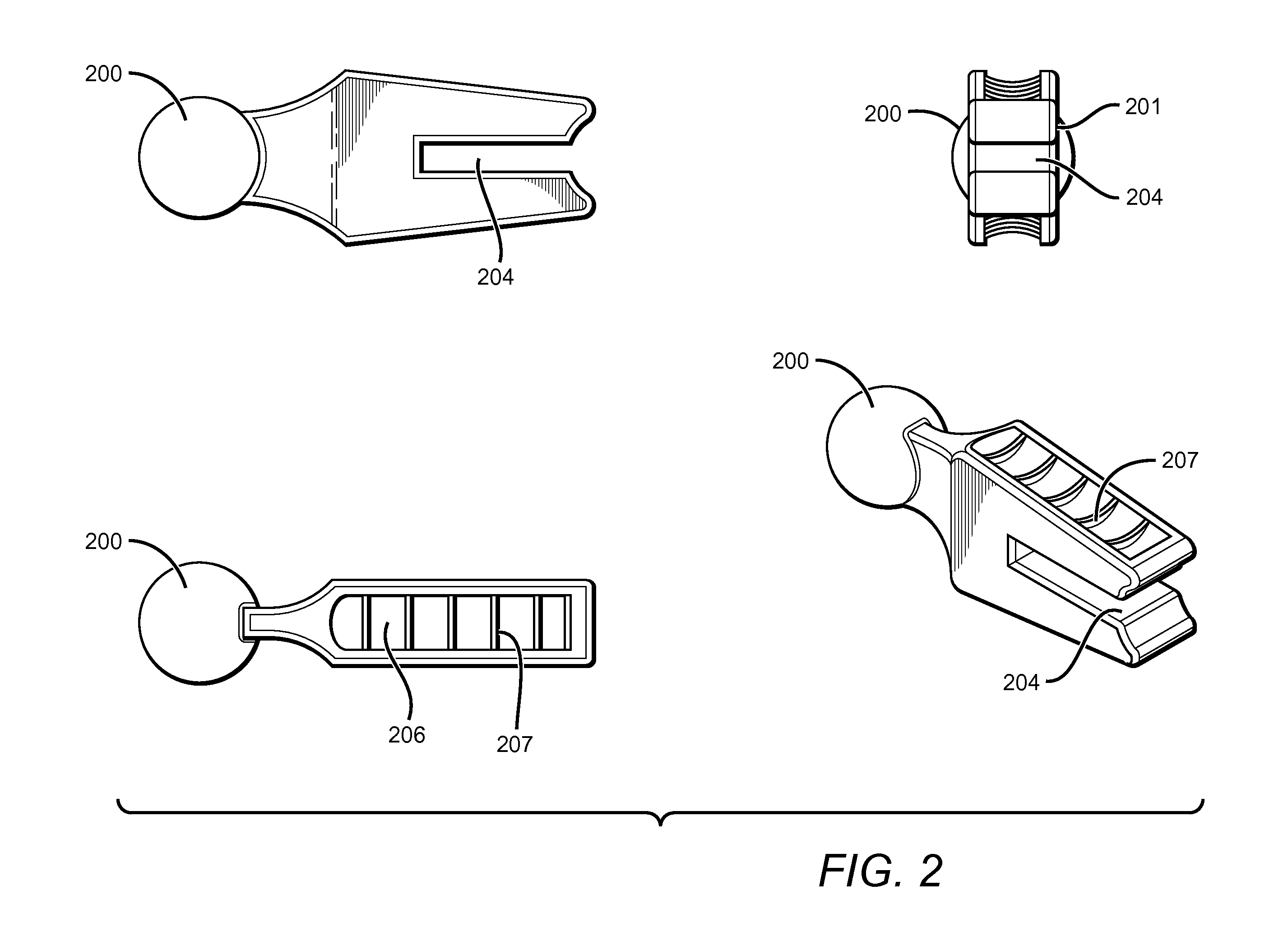Combination bite block, tongue depressor/retractor and airway
a technology of tongue depressor/retractor and combination airway, which is applied in the field of bite blocks, can solve the problems of diseased or restored teeth being particularly vulnerable to injury, conventional oropharyngeal airways and combination airway/bite blocks generally suffer from significant defects
- Summary
- Abstract
- Description
- Claims
- Application Information
AI Technical Summary
Benefits of technology
Problems solved by technology
Method used
Image
Examples
embodiment 1100
[0048]FIGS. 11 and 12A-12C shows an embodiment 1100 with a bite block 1110 and a tubular tongue elevating portion 1120 coupled by attachment plane 1130. Tubular tongue elevating portion is shaped like a quarter of a tube to improve its ability to retract the posterior portion of the patient's tongue from the posterior pharynx. Tubular tongue elevating portion 1120 has an advantageous hollow 1122 that allows the tongue elevator to be made from a strong material, but be flexible enough to give slightly when a patient pushes with his / her tongue, preventing injuries or other scrapes. Bite block 1110 has molar receiving holes 1114 with a valley that runs between the left and right molar receiving holes to help hold the patient's posterior teeth in place while the airway device is in use. Knob 1112 functions as a handle, allowing a user to rotate bite block 1110 easily with only a thumb and forefinger.
[0049]Attachment plane 1130 is approximately half a centimeter wide, positioning tubular...
embodiment 1300
[0050]FIGS. 13 and 14A-14C show an alternative embodiment 1300 with bite block 1310 and flattened tongue elevating portion 1320. Flattened tongue elevating portion 1320 has an anterior flat portion 1322 and a posterior tongue elevating / retracting portion 1324. Bite block 1310 is similar to bite block 1110, however, bite block 1310 has an alternative insertion handle, 1312. Insertion handle 1312 hooks around the patient's gumline, anterior to posterior, of the patient, and is designed to sit flush on the buccal mucosa of the gums. This allows the airway device to be used in conjunction with peri-buccal breathing masks, such as the NuMask®, and also enables the seal between the peri-buccal breathing mask and the area between the cheeks, inner lips, and gums. Although insertion handle 1312 is placed within the side of the patient's mouth insertion handle 1312 still allows a user to easily grasp the airway device and position it appropriately.
[0051]In all of the preferred embodiments sh...
PUM
 Login to View More
Login to View More Abstract
Description
Claims
Application Information
 Login to View More
Login to View More - R&D
- Intellectual Property
- Life Sciences
- Materials
- Tech Scout
- Unparalleled Data Quality
- Higher Quality Content
- 60% Fewer Hallucinations
Browse by: Latest US Patents, China's latest patents, Technical Efficacy Thesaurus, Application Domain, Technology Topic, Popular Technical Reports.
© 2025 PatSnap. All rights reserved.Legal|Privacy policy|Modern Slavery Act Transparency Statement|Sitemap|About US| Contact US: help@patsnap.com



